What happens if your dog gets something they shouldn’t? Unless they are taught a different behavior most dogs will try to play keep away with a found item like a sock that falls out of the laundry, or a chicken bone discarded on the street.
This creates a dangerous situation where dogs can potentially eat items that could hurt them, leaving dog owners scrambling trying to wrestle the dangerous item away from the dog’s mouth.
It’s natural for dogs to want to keep things they value, but with some training, you can turn this situation into a game that will leave your dog wanting to give you whatever treasure they find and can even prevent resource guarding from occurring. It’s a life-saving skill all dogs should learn.
What Is Resource Guarding
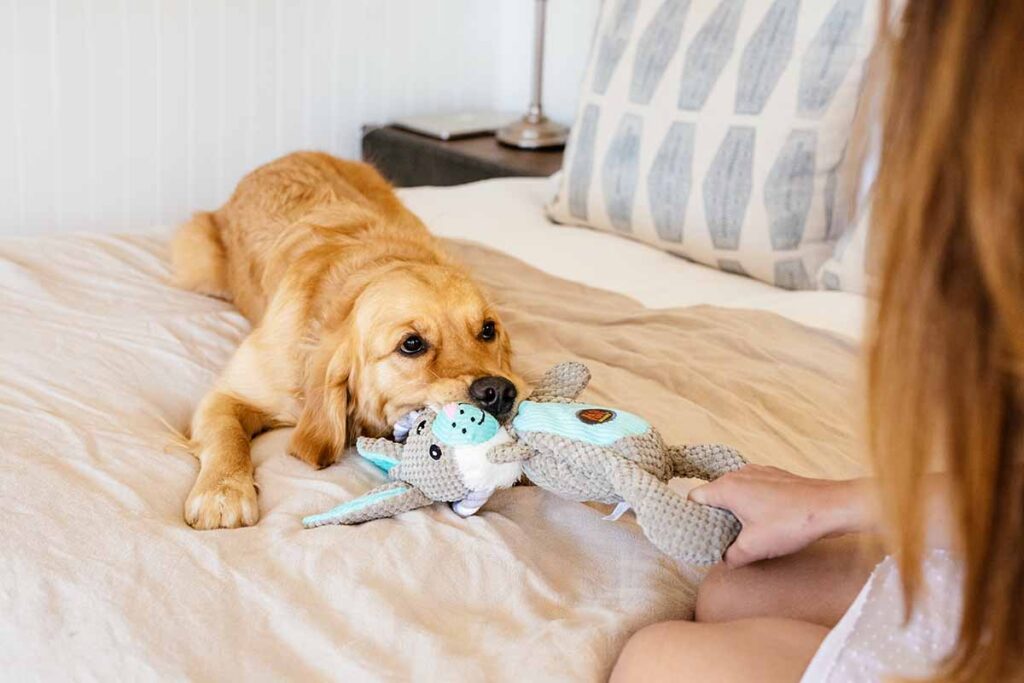
Resource guarding is a natural dog behavior for animals — including people and dogs! It refers to the desire to hold onto and protect valuable items that are in your possession.
Even though resource guarding is a natural behavior, it can be problematic in the home if your dog is trying to keep items away from you. Dogs who resource guard are generally protective of items they have including food, treats, toys, and/or beds.
Dogs of any breed can display resource guarding behaviors which include:
- barking
- lunging
- growling
- snapping or even biting
Dogs will bark, lunge, growl, snap, or even bite if they feel like someone is trying to take their item of value.
Preventing Resource Guarding
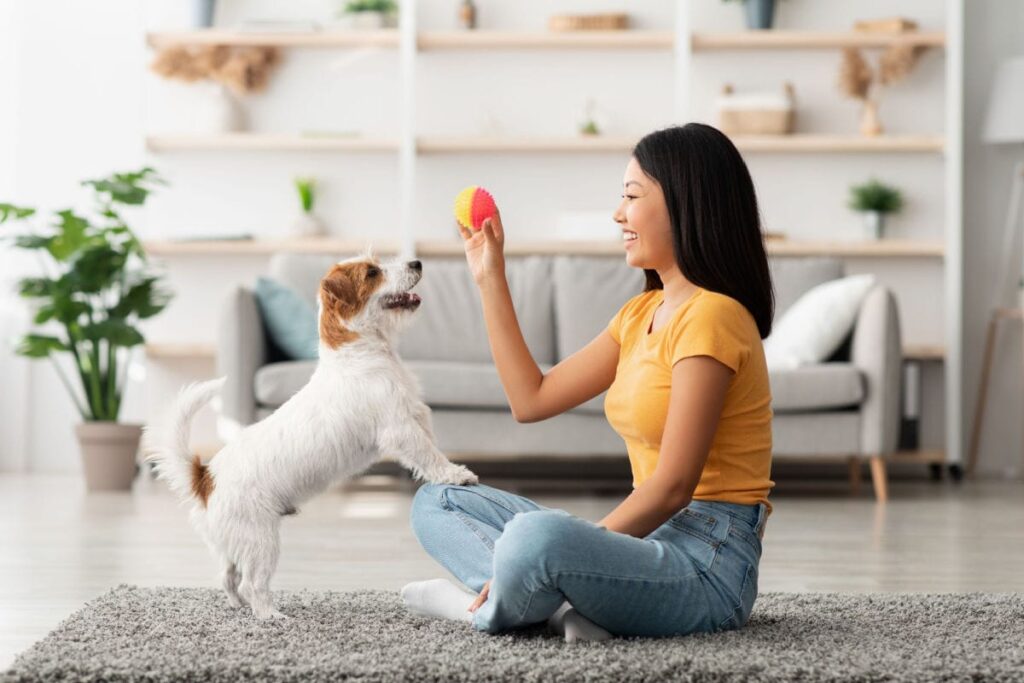
Ideally, we want our dogs to be comfortable with us being near or even touching and taking their toys and other items. One of the best ways to prevent our dogs from developing resource-guarding tendencies is to teach a dog that if we take something from them, we’re going to give something better in return. This helps dogs feel like they don’t have to protect what they have.
To do this we’re going to teach a behavior that is incompatible with resource guarding. Instead of trying to take items from your dog by force, we’re going to teach our dogs to trade items they have for a high-value treat that you’re offering.
Teaching this game can help your dog develop a positive association with bringing you things of value, knowing they will get something better from you. This will keep your dog safe by decreasing conflict in the relationship and prevents your dog from resource guarding because they understand good stuff comes from sharing.
Teaching Trade It!
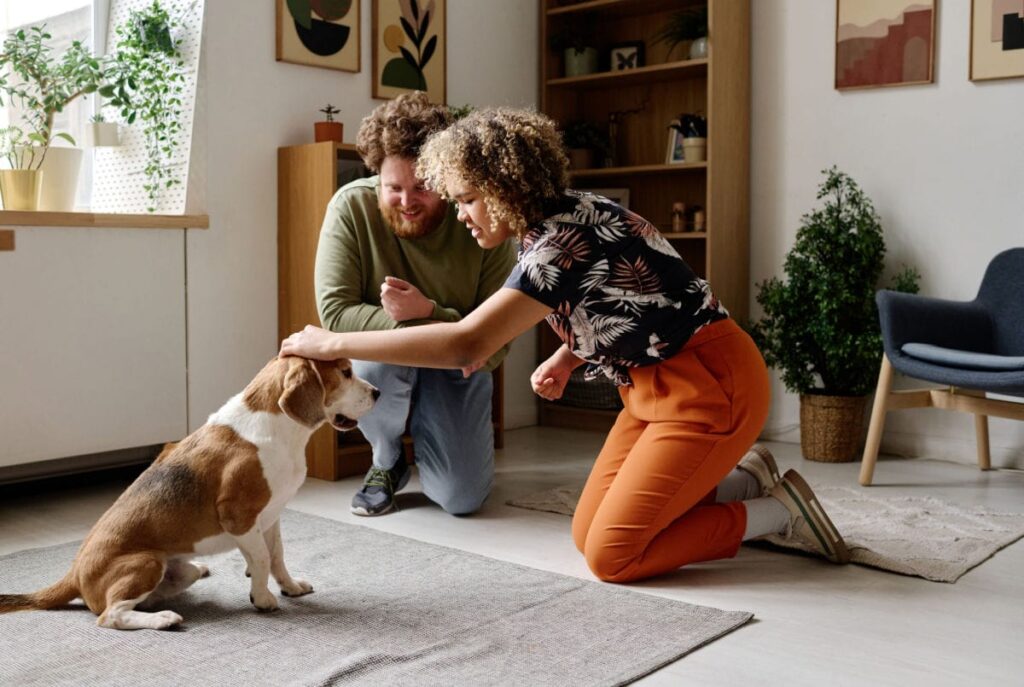
Instead of having to wrestle something away from your dog, teach your dog to trade you the stolen or forbidden item in exchange for a really good treat. By turning a moment where your dog has something they shouldn’t into a game, you’ll be able to easily take items from your dog when you need to. It’s never too early or late to start teaching this skill.
Begin teaching your dog to trade for the first time at home in a quiet area with low-value dog toys that your dog is interested in playing with but isn’t obsessed with. Then, you’ll want to have very high-value dog treats that your dog is super excited about. If you have a clicker for dog training, you may use that.
Step 1
Toss a toy. When your dog starts playing with it, show them a piece of the food reward. When your dog drops their toy to get the treat, praise your dog and give them the treat.
Praise your dog and take the toy and put it behind your back. (You could also practice this by engaging in a game of tug-of-war.)
Step 2
Repeat this offering your dog a tasty treat in exchange for dropping the toy they are playing with.
Step 3
As your dog gets familiar with the game, they will start offering to let go of the toy right away as you present the treat. This is when you can start to incorporate the verbal cue of your choice like “trade” or “give.”
Step 4
After several practices ask your dog to “trade” you the toy for a treat by using your verbal cue without showing the treat first.
When your dog drops the toy, give lots of praise and reward with multiple treats to help build the value for your dog. Don’t be afraid to get silly and throw a little party with your dog – this is a hard skill, and we want our dogs to know how excited we are.
If your dog doesn’t drop the toy when they hear the verbal cue, go back to the previous step of showing the treat first for a few repetitions before trying again with just the verbal cue.
Step 5
Once your dog is consistently able to follow the verbal cue, it’s time to start practicing the skill with more exciting objects of higher value such as your dog’s favorite toy.
As you increase the difficulty of the item you’re asking your dog to trade, make sure to keep your treats as high value as possible and start by showing your dog the treat in conjunction with your trade cue.
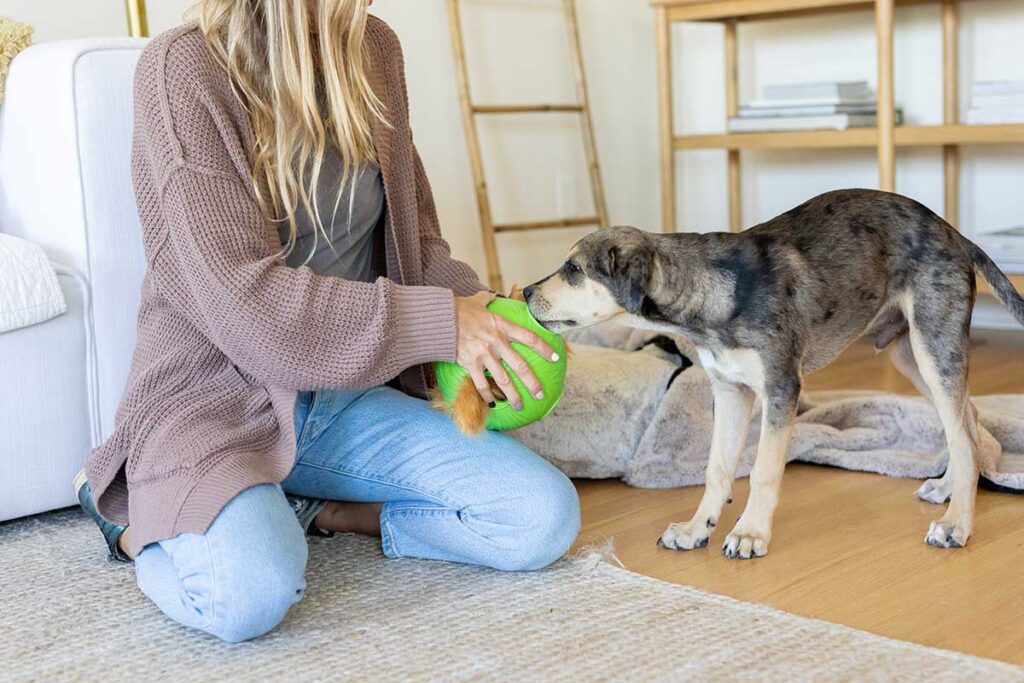
Real World Practice
The better your dog gets at the game, start working up the difficulty of the trades by asking your dog to trade toys they really love, as well as chews and other high-value items.
You can also start to use the cue around the house if your dog grabs a sock out of the laundry or something else that doesn’t belong to them. Just remember to be sure that you’re using high-value rewards to trade your dog for those items.
This is a challenging behavior where we are asking our dogs to give up something that has value to them, so it’s important to always reinforce this skill with a high-value reward.
Once your dog can respond to cues to trade their toys, chews, and other items around the house, it’s time to start incorporating this skill while out in the world if your dog picks up something they shouldn’t like a rock or chicken bone.
Have your high-value treats stashed in your treat pouch ready to enthusiastically praise and reward your dog when they trade you a forbidden item.
How to Teach a Dog to Drop It: When to Get Professional Support
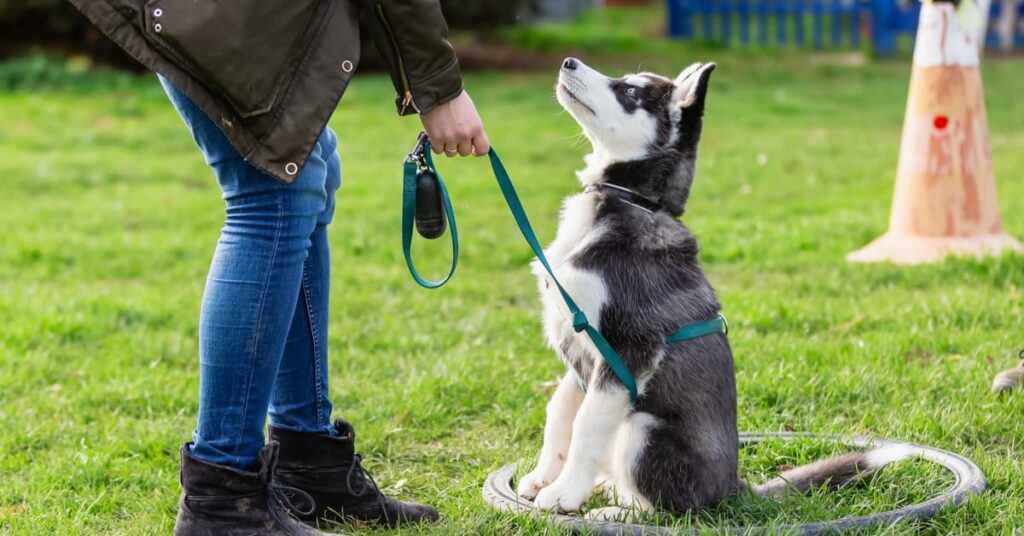
If you have a dog who has ever displayed any resource guarding behaviors including growling, snapping, or biting when you try to take something from them, it’s important to get professional support from an experienced professional dog trainer and/or veterinary behaviorist. This is a situation that can escalate. For everyone’s safety, a professional trainer who uses positive reinforcement training session methods should work directly with you and your dog to help manage and develop a training plan.
You never want to punish your dog for growling when you try to take something from them. Growling is a way that your dog communicates their feelings. It is an integral part of how dogs communicate and is an early warning sign that your dog is uncomfortable. If growling gets punished, it’s more likely in the future your dog will go directly to biting which can be dangerous.

